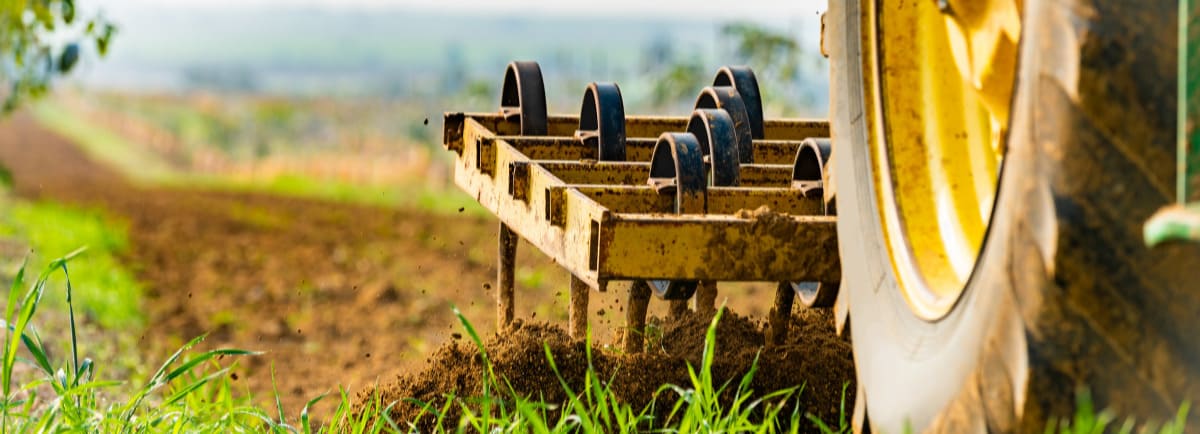A complete guide to purchasing vibro-cultivators, with all their features and how to use them.
The Guide to Choosing the Best Vibro-Cultivators
Comprehensive and Edited by True Tractor Machinery Experts
1. Introduction
The vibro-cultivator is an equipment used to refine the soil and eliminate of re-growing weeds. By working in the topsoil at a depth of 5-15 cm, it is able to break up and further refine clods left over from previous work, such as tilling, and for this reason it is considered a cultivator.
This cultivator does not require high driving and lifting power but starts from 40 HP as can reach working widths, in foldable models, of up to 4 meters. Furthermore, the springs are arranged in rows that on average vary from 3 to 5, at times up to 9, thus increasing its total weight.
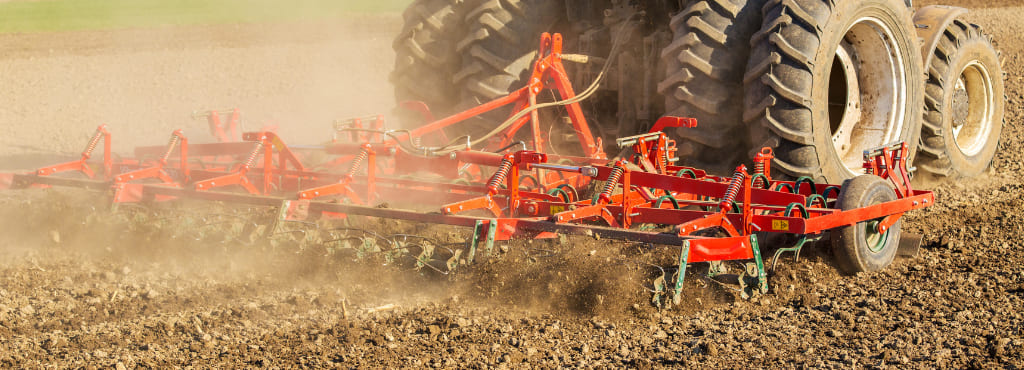
2. Main components of the vibro-cultivator
The vibro-cultivator consists of a three-point hitch and a main frame (foldable for transport purposes on wider models) to which the tines are fitted. These, in the upper part, consist of a spring attached to the frame, which generates the vibrating effect, and end with a ploughshare.
Some models are equipped with a rake or rear rollers that make the soil as even as possible, and wheels (steel, iron or rubber) that adjust the working depth. In smaller machines, the depth can be adjusted directly from the three-point hitch, while in larger and more modern models it is also adjusted via hydraulic pistons.
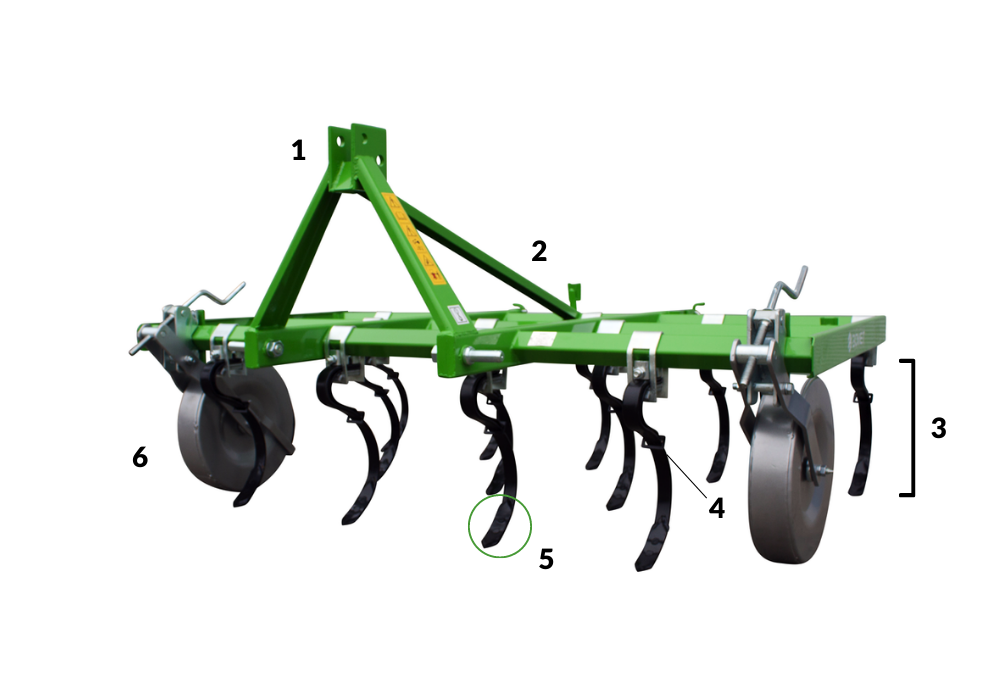
- 3-Point hitch.
- Frame (pipes connected with iron trusses)
- Tines
- Spring (supported by the reinforcing spring if the machine is intended for working on hard soils, but usually results in a decrease in the vibrating effect)
- Ploughshare (reversible or spear)
- Wheels (manually adjustable via lever or connected to the hydraulic distributors)
3. Working the soil
The vibro-cultivator performs surface tillage, as it penetrates the soil within 20 cm, as well as complementary tillage as it prepares the seedbed and incorporates residues from previous crops into the surface layer of the soil.
Thanks to the vibration and crosswise and longwise movement of the springs, combined with the high speed of the tractor, the machine buries the smaller particles and brings the larger ones larger to the surface, breaking them up. This promotes almost perfect seed germination.
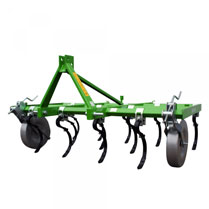
Some models may take a different configuration and be converted into weeding machines. This can be achieved by relocating the tines along the frame so that they are joined into 2 or 3 groups: by doing so, the tines in a single group will be close together, but the different sets will be separated according to the space between the cultivation rows.
The weeder performs a different function from the vibro-cultivator as it breaks up the soil crust and eliminates weeds even more shallowly. Therefore, by making small changes to the vibro-cultivator, one can perform two different jobs using the same machine.
Weeding is a consecutive process, i.e. after sowing, which allows breaking up the surface layer of soil between the rows of crops such as maize, sunflower or potatoes. Unlike other processes which have seasonal intervals, weeding is carried out when necessary and while crops are already in the vegetative period, i.e. when stem and leaves are growing. This can be performed once with crops such as maize or repeatedly with vegetables such as onions, even with the plant already well-developed.
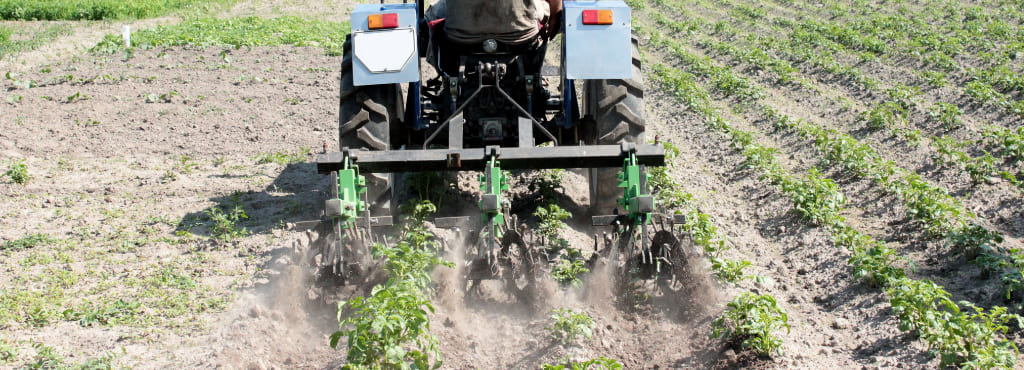
The purposes are thus to:
- crack the surface crust to regulate soil moisture: this is especially useful when the first layer of soil is particularly exposed to an arid climate, and one wants to reduce water evaporation by retaining moisture;
- eliminate weeds by a mechanical action instead of a chemical action: this action is especially suitable for prolonged monocultural productions (i.e. when the same crop is sown repeatedly in the field for many years). Over time, weeds, which also vary depending on the type of crop, become resistant to chemicals: in this case, eliminating them mechanically is the optimal choice.
4. Types
The main distinctions between the various vibro-cultivators are, in addition to the number of rows and the type of trailed or driven movement, the tines fitted to the frame.
More specifically, there are various combinations of springs and ploughshares (as well as various accessories such as spring reinforcements, brackets and bolts) that make up the tines. The springs that can be fitted to the vibro-cultivator are mainly divided in two types: flex springs (which in turn have three subclassifications: straight, mini-flex and super-flex) and leaf springs or Italy/Italian type. Ploughshares can be reversible or spear-shaped: each of these can have further distinctions such as straight, curved or double.
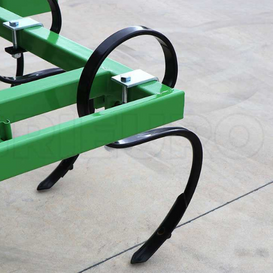
Flex Spring 
Leaf spring (with reinforcement) 
Reversible ploughshare 
Spear ploughshare



